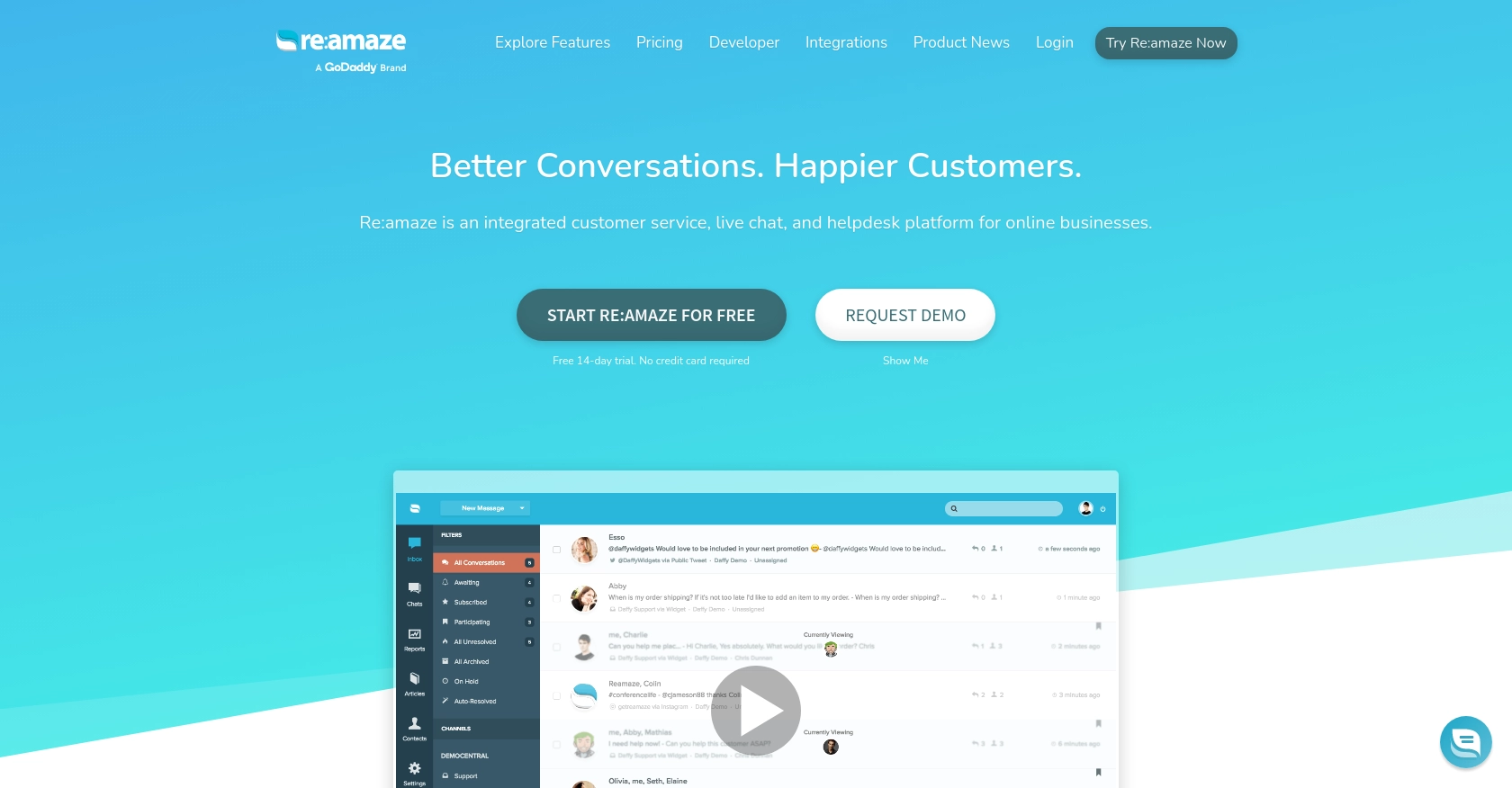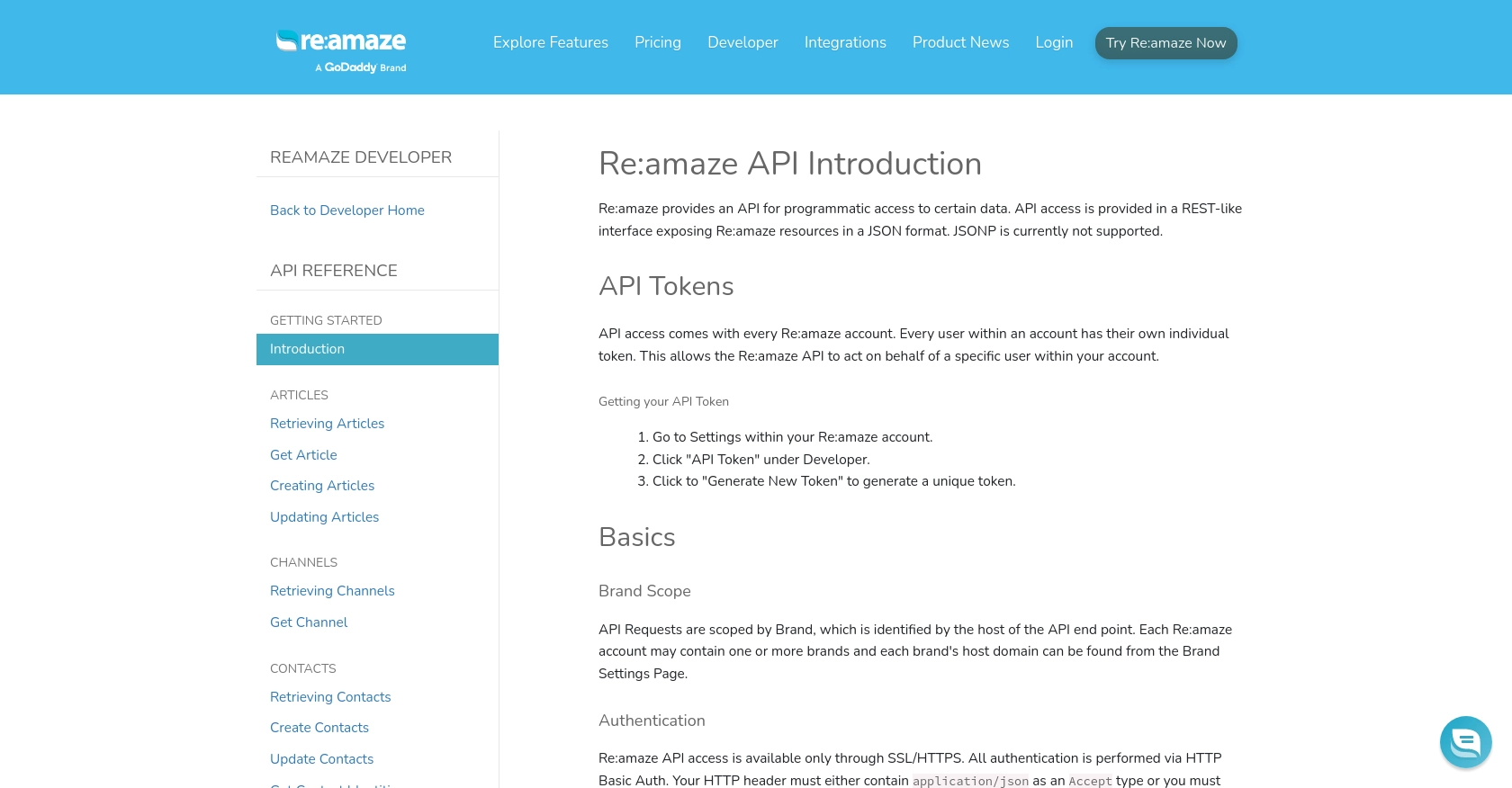Using the Re:amaze API to Get Contacts in Python

Introduction to Re:amaze API Integration
Re:amaze is a versatile customer support platform that offers a unified inbox for managing customer interactions across multiple channels. It provides tools for live chat, automated messaging, and customer engagement, making it an essential solution for businesses aiming to enhance their customer service experience.
Developers may want to integrate with the Re:amaze API to streamline customer data management and automate support processes. For example, by using the Re:amaze API, a developer can retrieve contact information to personalize customer interactions or synchronize data with other CRM systems.
Setting Up Your Re:amaze Test Account for API Integration
Before you can start using the Re:amaze API to retrieve contacts, you need to set up a test account. This will allow you to safely experiment with API calls without affecting your live data.
Creating a Free Re:amaze Account
If you don't already have a Re:amaze account, follow these steps to create one:
- Visit the Re:amaze website and click on "Try Re:amaze Now."
- Sign up using your email, Google, or Microsoft account.
- Follow the on-screen instructions to complete the registration process.
Generating Your Re:amaze API Token
Once your account is set up, you'll need to generate an API token to authenticate your requests:
- Log in to your Re:amaze account and navigate to the "Settings" section.
- Under "Developer," click on "API Token."
- Click "Generate New Token" to create a unique API token for your account.
- Copy and securely store this token, as you'll need it for making API calls.
Understanding Re:amaze API Authentication
The Re:amaze API uses HTTP Basic Auth for authentication. Ensure your requests are made over SSL/HTTPS for security. Your HTTP header must include application/json as an Accept type, or you must suffix the resource URL with .json.
For more detailed information, you can refer to the Re:amaze API documentation.

sbb-itb-96038d7
Making API Calls to Retrieve Contacts from Re:amaze Using Python
To interact with the Re:amaze API and retrieve contact information, you'll need to use Python, a versatile and widely-used programming language. This section will guide you through the process of setting up your environment, writing the necessary code, and executing API calls to fetch contacts from Re:amaze.
Setting Up Your Python Environment for Re:amaze API Integration
Before making API calls, ensure you have Python installed on your machine. This tutorial uses Python 3.11.1. Additionally, you'll need the requests library to handle HTTP requests. Install it using the following command:
pip install requestsWriting Python Code to Fetch Contacts from Re:amaze
Create a new Python file named get_reamaze_contacts.py and add the following code to it:
import requests
# Replace with your Re:amaze brand and API token
brand = "your_brand"
api_token = "your_api_token"
login_email = "your_login_email"
# Set the API endpoint
url = f"https://{brand}.reamaze.io/api/v1/contacts"
# Make a GET request to the API
response = requests.get(url, headers={"Accept": "application/json"}, auth=(login_email, api_token))
# Check if the request was successful
if response.status_code == 200:
contacts = response.json().get("contacts", [])
for contact in contacts:
print(f"Name: {contact['name']}, Email: {contact['email']}")
else:
print(f"Failed to retrieve contacts: {response.status_code} - {response.text}")
Replace your_brand, your_api_token, and your_login_email with your actual Re:amaze brand, API token, and login email.
Executing the Python Script to Retrieve Contacts
Run the script from your terminal or command line using the following command:
python get_reamaze_contacts.pyIf successful, the script will output a list of contacts with their names and email addresses. If there's an error, it will display the status code and error message.
Handling Errors and Verifying API Call Success
To ensure the API call was successful, check the response status code. A status code of 200 indicates success. If you encounter a 429 error, it means you've hit the rate limit. Re:amaze's API rate limit is enforced per API token, and exceeding it will result in a "Too Many Requests" response. For more details, refer to the Re:amaze API documentation.
Verify the retrieved contacts by cross-referencing them with the data in your Re:amaze account. This ensures that the API call is fetching the correct information.

Conclusion and Best Practices for Using Re:amaze API in Python
Integrating with the Re:amaze API allows developers to efficiently manage customer data and automate support processes, enhancing the overall customer service experience. By following the steps outlined in this guide, you can successfully retrieve contacts using Python, ensuring seamless data synchronization with your CRM systems.
Best Practices for Secure and Efficient Re:amaze API Integration
- Secure Storage of API Credentials: Always store your API token and login credentials securely. Consider using environment variables or a secure vault to prevent unauthorized access.
- Handling Rate Limits: Be mindful of Re:amaze's API rate limits. Implement retry logic with exponential backoff to handle HTTP 429 errors gracefully and avoid service disruptions.
- Data Standardization: Ensure that the data retrieved from Re:amaze is standardized and transformed as needed to fit your application's requirements. This will facilitate smoother data integration and processing.
Streamlining Integrations with Endgrate
While integrating with Re:amaze is straightforward, managing multiple integrations can be complex and time-consuming. Endgrate offers a unified API solution that simplifies the integration process across various platforms, including Re:amaze. By using Endgrate, you can focus on your core product development while outsourcing the complexities of integration management.
Explore how Endgrate can enhance your integration strategy by visiting Endgrate's website. Save time and resources by leveraging a single API endpoint for all your integration needs, providing an intuitive experience for your customers.
Read More
Ready to get started?
